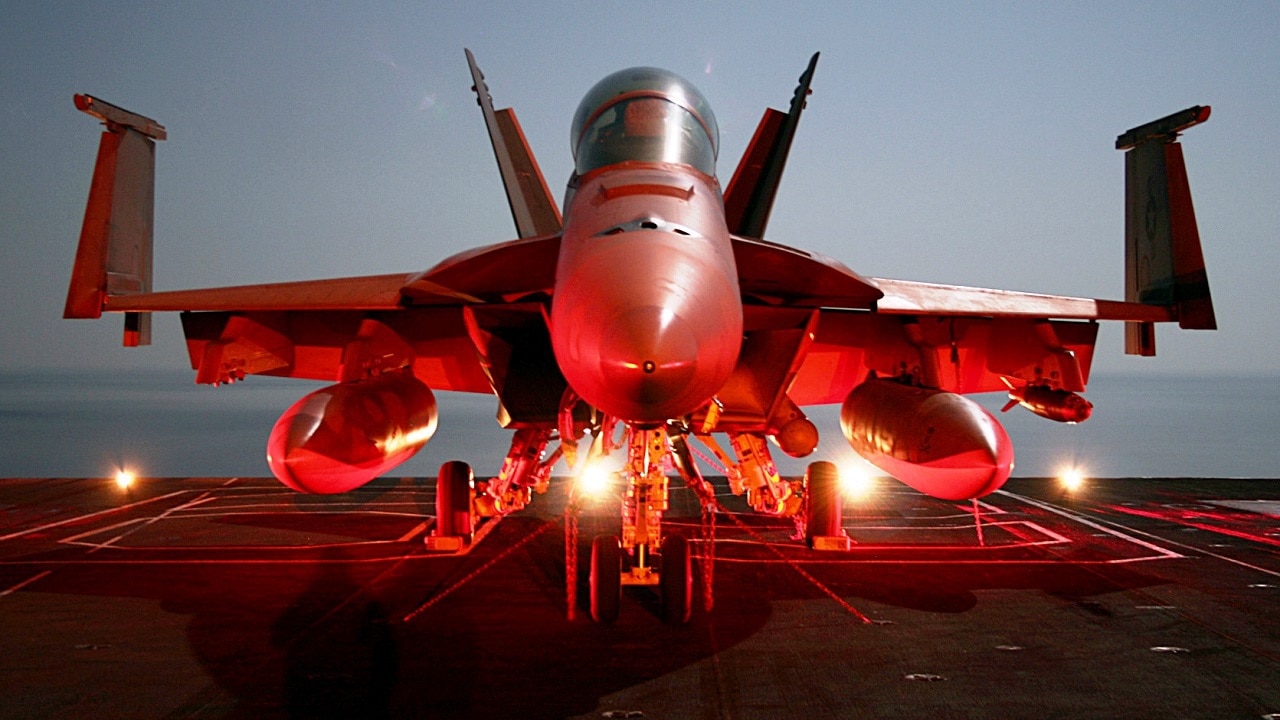Next-generation infrared target tracking, conformal fuel tanks, a fully redesigned digital cockpit, and new “glide slope” carrier-landing software are just a few of the many life-extending enhancements woven into the U.S. Navy’s classic F/A-18 Hornet and Super Hornet.
The Navy’s F/A-18 has already more than outlived its anticipated service through extension programs, upgrades, and massive amounts of modernization to ensure the 1980s-launched jet remains relevant, lethal, and cutting-edge in a modern threat environment.
While the original McDonnell Douglas-Northrop airframe dates all the way back to the mid-1970s, today’s F/lA-18 is virtually an entirely new aircraft due to the scope of its technological enhancements. In recent years, the aircraft was the focus of an extensive Service Life Extension Program (SLEP) designed to upgrade and reinforce the airframes, onboard electronics, and engine performance. Specifically, Navy and industry engineers modified the center barrel section to reinforce the airframe.
The impact of this SLEP has been quite substantial, as it has extended the F/A-18’s flight hours from 6,000 all the way up to 10,000 over the course of many years. Simply put, this has added many years to the relevance, performance, and continued operational functionality of the F/A-18. This has been and continues to be critical for the Navy as the service fast-tracks the arrival of its 6th-generation F/A-XX Next Generation Air Dominance platform.
F/A-18 Life Goes from 6,000 flight hours to 10,000 flight hours
The SLEP program, which now goes back nearly 10 years, was intended to ensure the Carrier Air Wing remained sufficiently lethal during a gap in time when fleet size was decreased by the retirement of the F-14 Tomcat and delayed arrival of the F-35Cs. For many years going back to 2014 or even earlier, the Navy has been requesting additional F/A-18s and regularly placed them on the service’s unfunded priorities budget list.
All this considered, there is also widespread recognition that there are limits to exactly how much a 1970s and 1980s-era airframe can ultimately be extended and upgraded. Perhaps most of all, the F/A-18 is not stealthy, meaning its edges, shapes, and external configuration make it extremely difficult to hide from modern air defenses. Nonetheless, the U.S. Navy has in recent years added radar signature-reducing curved, conformal fuel tanks and experimented with rounded external weapons pods to add some measure of “stealth-like” attributes to the aircraft.
While these initiatives would seem to lower the radar signature or cross-section of the aircraft by smoothing over some of the sharp edges or contours likely to generate a return signal and creating a slightly more horizontal blended wing-body type of structure, Navy developers certainly understood these adaptations would not likely qualify the F/A-18 as sufficiently “stealthy” to evade modern air defenses.
The F/A-18 also received enhanced digital radios and infrared search and track (IRST) targeting technologies designed to improve threat tracking and function in an electronic warfare (EW) threat environment. Joint Helmet-Mounted Cueing Systems enable a wider and higher resolution field of view for pilots.
Active Electronically Scanned Array (AESA) on the F/A-18 has also been enhanced and, perhaps of greatest technological complexity, the F/A-18s have received a specially developed software application called “magic carpet” designed to assist pilots with a smooth landing and successful glide-slope as they bank and align for what can often be challenging carrier landings at sea.
Kris Osborn is the Military Affairs Editor of 19FortyFive and President of Warrior Maven – Center for Military Modernization. Osborn previously served at the Pentagon as a Highly Qualified Expert with the Office of the Assistant Secretary of the Army—Acquisition, Logistics & Technology. Osborn has also worked as an anchor and on-air military specialist at national TV networks. He has appeared as a guest military expert on Fox News, MSNBC, The Military Channel, and The History Channel. He also has a Masters Degree in Comparative Literature from Columbia University.
From 19FortyFive
Footage Shows World War I Guns Being Used in Ukraine
‘Vacuum Bombs Destroyed’: Ukraine Footage Shows Putin’s Thermobaric Rockets Destroyed
BOOM! Ukraine Video Shows Precision Strike on Russian Air-Defense System

